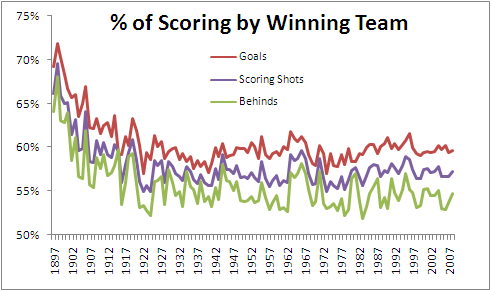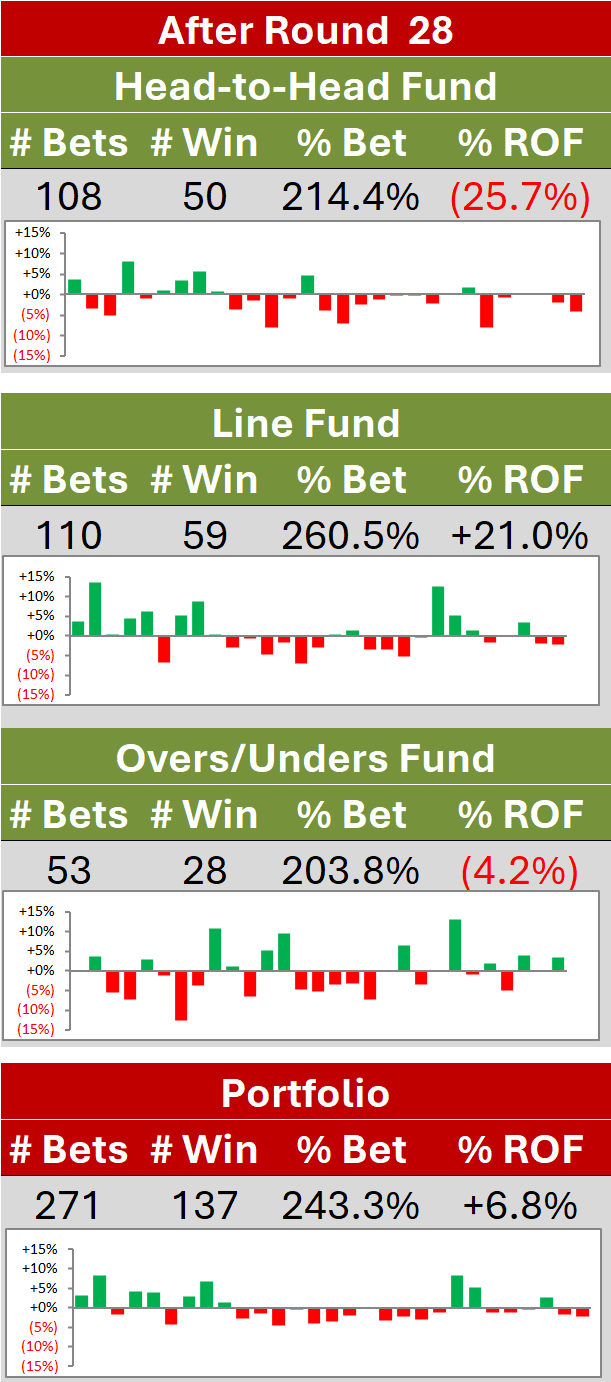Percentage of Points Scored in a Game
/We statisticians spend a lot of our lives dealing with the bell-shaped statistical distribution known as the Normal or Gaussian distribution. It describes a variety of phenomena in areas as diverse as physics, biology, psychology and economics and is quite frankly the 'go-to' distribution for many statistical purposes.
So, it's nice to finally find a footy phenomenon that looks Normally distributed.
The statistic is the percentage of points scored by each team is a game and the distribution of this statistic is shown for the periods 1897 to 2008 and 1980 to 2008 in the diagram below.
Both distributions follow a Normal distribution quite well except in two regards:
- They fall off to zero in the "tails" faster than they should. In other words, there are fewer games with extreme results such as Team A scoring 95% of the points and Team B only 5% than would be the case if the distribution were strictly normal.
- There's a "spike" around 50% (ie for very close and drawn games) suggesting that, when games are close, the respective teams play in such a way as to preserve the narrowness of the margin - protecting a lead rather than trying to score more points when narrowly in front and going all out for points when narrowly behind.
Knowledge of this fact is unlikely to make you wealthy but it does tell us that we should expect approximately:
- About 1 game in 3 to finish with one team scoring about 55% or more of the points in the game
- About 1 game in 4 to finish with one team scoring about 58% or more of the points in the game
- About 1 game in 10 to finish with one team scoring about 65% or more of the points in the game
- About 1 game in 20 to finish with one team scoring about 70% or more of the points in the game
- About 1 game in 100 to finish with one team scoring about 78% or more of the points in the game
- About 1 game in 1,000 to finish with one team scoring about 90% or more of the points in the game
The most recent occurrence of a team scoring about 90% of the points in a game was back in Round 15 of 1989 when Essendon 25.10 (160) defeated West Coast 1.12 (18).
We're overdue for another game with this sort of lopsided result.





















